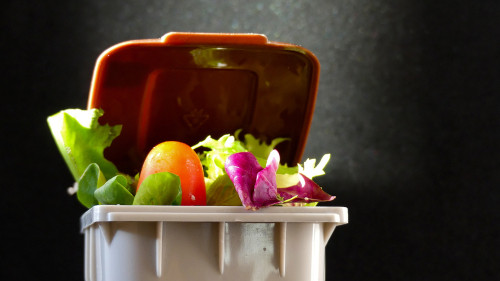Popular Reads
Top Results
Can't find what you're looking for?
View all search resultsPopular Reads
Top Results
Can't find what you're looking for?
View all search resultsHow to prevent food waste in your own kitchen
Food waste is a global problem with serious environmental impacts. The UN Food and Agriculture Organization (FAO) estimates that the carbon footprint of food waste is 3.3 billion tons of CO2 equivalent per year.
Change text size
Gift Premium Articles
to Anyone
F
ood waste is a global problem with serious environmental impacts. The UN Food and Agriculture Organization (FAO) estimates that the carbon footprint of food waste is 3.3 billion tons of CO2 equivalent per year. Food rotting in landfills releases methane, a greenhouse gas.
According to a 2018 study by the Economist Intelligence Unit, Indonesia was the second-largest food waste producer in the world, with roughly 300 kilograms of wasted food per person per year.
While food waste occurs at all stages of the food supply chain, private households have been identified as key contributors to food waste.
You can help in the fight against food waste by following the best practices below.
1. Weigh your waste
You can optimize your food purchases by making a list of whatever produce and ready-to-eat food you have every day and tracking how much is left uneaten by the end of the day.
This method has proven effective in battling food waste in large corporations that provide food for employees or customers.
Furniture company IKEA Indonesia said it had reduced the value of its food waste by 31 percent and the weight of its food waste by 41 percent in the food court of its Alam Sutera branch in South Tangerang from 2019 to 2020. That is equal to roughly 15,000 meals. Some 26 tons of carbon-dioxide emissions were prevented.
Ririh Dibyono, IKEA food commercial manager, said in a webinar recently that the company used Waste Watcher, a smart scale designed to prevent waste, to track their progress.
To copy this method at home, you can weigh your food waste with a kitchen scale and write notes on why the food was uneaten. This way, it will be easier for you to make your next shopping list leaner and prevent food waste in the future.
2. Buy “ugly” produce
A big chunk of food waste in landfills is perfectly edible but has been thrown away by supermarkets or produce shops because it has been deemed “too ugly” to buy. Customers tend to prefer produce with a fresh appearance, meaning overripe bananas or apples with small bruises are left in the displays. Many sellers also tend to throw away “ugly” fruits and vegetables in the sorting process.
“It is a big problem faced by local fruit farmers and distributors [selling] to supermarkets. During the sorting process, many fruits are eliminated just because of their physical imperfections despite being 100 percent edible,” a spokesperson from Panen Abnormal (Abnormal Harvest) told The Jakarta Post on Wednesday.
The initiative, founded by 25-year-olds Alvin Subianto, Laurentia Mellynda, Jesslyn Darmadi and Vintho Aviano, sells neglected but perfectly edible produce through an online store.
“The produce might be too small, have a little scratch or be smeared with dirt due to negligence during the shipping and storing process,” they wrote.
Panen Abnormal sources their produce from local fruit distributors, farmers and supermarkets. They also use second-hand cardboard boxes from nearby businesses for packaging to minimize the use of plastic.
“As long as it is not rotten and still edible, we are sure that there are people who are willing to buy the produce so it won’t end up as waste,” they wrote.
Read also: Lockdown, leftovers and how food frugality is a climate boon
3. Store fruit in visible places
Often people buy fruit only to leave it a forgotten corner of the refrigerator. This is a significant loss of good nutrition and an addition to food waste.
You should buy fruits that you will eat quickly and display them in visible places. For example, instead of storing your fruits at the bottom of your fridge, take a pretty platter and put the fruit at the center of the dining table, on your desk, on the coffee table or anywhere else you and your family spend time.
When fruits are prominently displayed, you are more likely to eat them. Besides, who doesn’t love the sight of pretty oranges piled on a platter?
If you still have ripening fruits, you can freeze them and use them later to make smoothies, fruit sauce or to provide additional flavor to porridge or cereal.
4. Share your food
This method is good for people living in boarding houses. Make meal plans with your housemates and buy meals or produce together so you can avoid overstocking.
If you live alone and are too busy to cook, takeout is often the answer. When your favorite takeout place gives you a big portion, divide the food into separate containers for later consumption. You can put the extra portions in the fridge to heat up later or give them away to others.
5. Recycle your waste
Recycling is another important step in food waste management. Composting is a simple way to make use of your uneaten food and kitchen scraps. You can even use your compost to start a little garden and grow your own food.
You can also participate in initiatives by local waste prevention organizations, such as Waste4Change, by donating food waste to be used to produce energy. The organization is currently campaigning for the cultivation of Black Soldier Flies (BFS), which can consume food waste and prevent the emission of methane gas from landfills. (wng)











